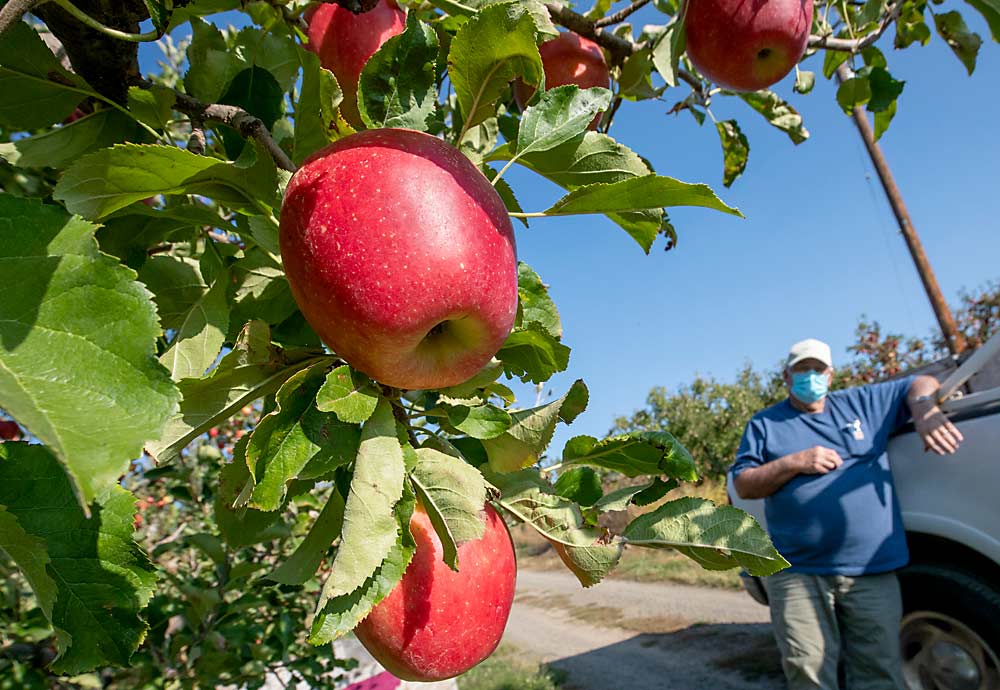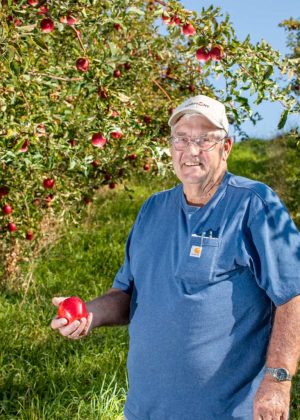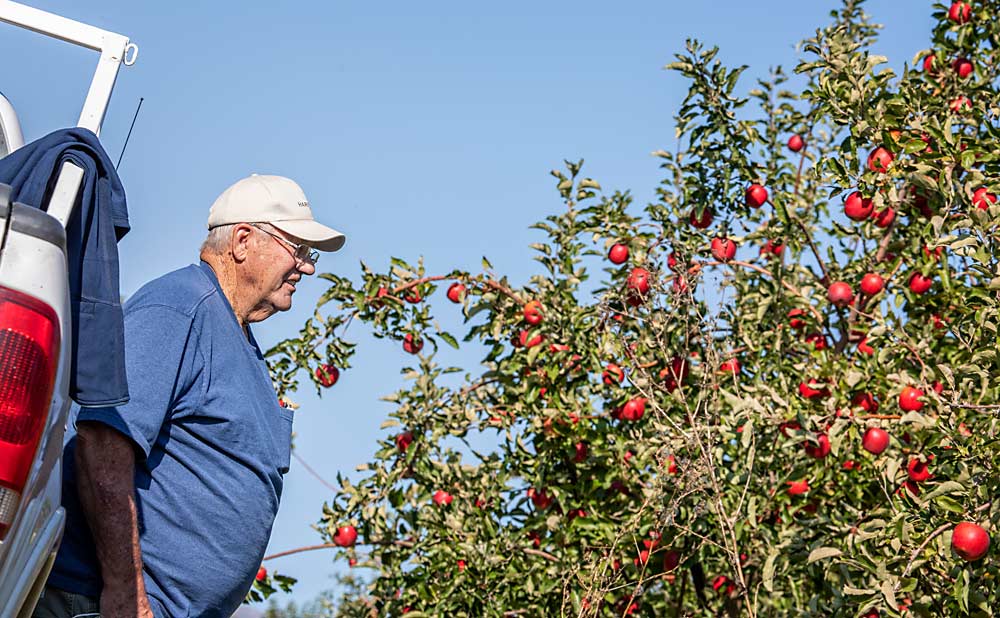
Jack Van De Brake retired from the apple industry 20 years ago, but he can’t give up on two blocks where he’s been experimenting with a chance seedling he discovered in 1997 in one of his West Yakima Valley, Washington, orchards.
“When I found the tree, I’d just finished harvesting Goldens and was looking at a Red Delicious block, and this one tree stood out; it didn’t look like anything I’d ever seen,” he said. “It only had six apples on it, and I picked them at Thanksgiving and they were absolutely wonderful.”
While the sweet, crispy fruit captured his attention enough to graft it onto standard roots, over the years since he’s learned that the tree has an upright growth habit that seems perfectly suited for modern, high-density orchards, and it crops well with very low inputs. After genetic testing by Foundation Plant Services at the University of California, Davis confirmed it was a unique chance seedling, Van De Brake named it Vandees and sought a trademark. He grows about 2 acres, which supplies farm stands and friends.

The lucky find, a chance seedling destined for success, is a favorite story in the apple industry, but the bar continues to rise for apples that the industry — now flush with high-quality cultivars competing for retail attention — is willing to take a chance on.
Van De Brake hopes to find someone who will take a chance on turning his apple from a passion project to a profitable one. One Seattle-area grocery chain was very excited about it, but only if they could get volumes that Van De Brake, now 81, knew he couldn’t deliver himself.
“If I was 20 years younger, I’d do it myself,” he said. “I believe in it this much.”
So, this year, he held orchard tours and shared fruit with a few representatives from fruit companies, a couple of whom expressed interest in learning more, he said in early October.
The challenge is that lucky finds like Van De Brake’s now compete against an apple variety development industry, with many breeding and variety programs around the world evaluating hundreds of thousands of seedlings with sophisticated genetic testing and large-scale orchard, postharvest and consumer testing, said Rob Blakey, who manages Stemilt Growers’ new variety program.
So while chance seedlings like Van De Brake’s can find a commercial backer, they compete against these large-scale breeding and evaluation programs run by breeders, nurseries and growers, Blakey said. While he wasn’t familiar with Van De Brake’s apple, he said that, broadly, any seedling has a small chance of success, and that chance is even smaller if it is a one-off outside of a professional breeding program.
But Van De Brake has learned a lot in his 23 years growing the Vandees with the aim of eventually selling it, and he’s undaunted by the odds. In fact, the industry’s current need for high-density efficiency seems to him like the perfect time to see if the Vandees merits a commercial shot.
The fruit quality is good and reliable, he said — so sweet it was always a hit with students at the West Valley School District, where he sold his small crop for many years — but he’s making his case for the apple based on its “grower-friendliness.”

“It took me a while to figure out that these things want to grow straight up,” he said, showing off a block where the Vandees were grafted onto Malling 26 rootstocks at a 4-foot spacing, sending up tall spurs that drooped under the weight of fruit in his freestanding orchard. “There’s no pruning to it, they don’t grow out.”
Crop consultant Bryan Eglet said he sees the variety lends itself to super spindle-style production and perhaps to organic production. Van De Brake said it’s had very few pest and disease problems over the years, with few inputs beyond a basic codling moth program.
For more than a decade, he has grown the trees without fertilizer, since the school district wanted 125s for school lunches. With thinning and a little bit of fertilizer — he’s experimenting — he can grow 80s and up.
“It’s the cheapest apple I’ve grown in my whole life,” Van De Brake said, adding that low cost is critical for small growers to stay in business. That’s why he wants other growers in the industry he loves to have a chance to grow it, too.
—by Kate Prengaman






Leave A Comment